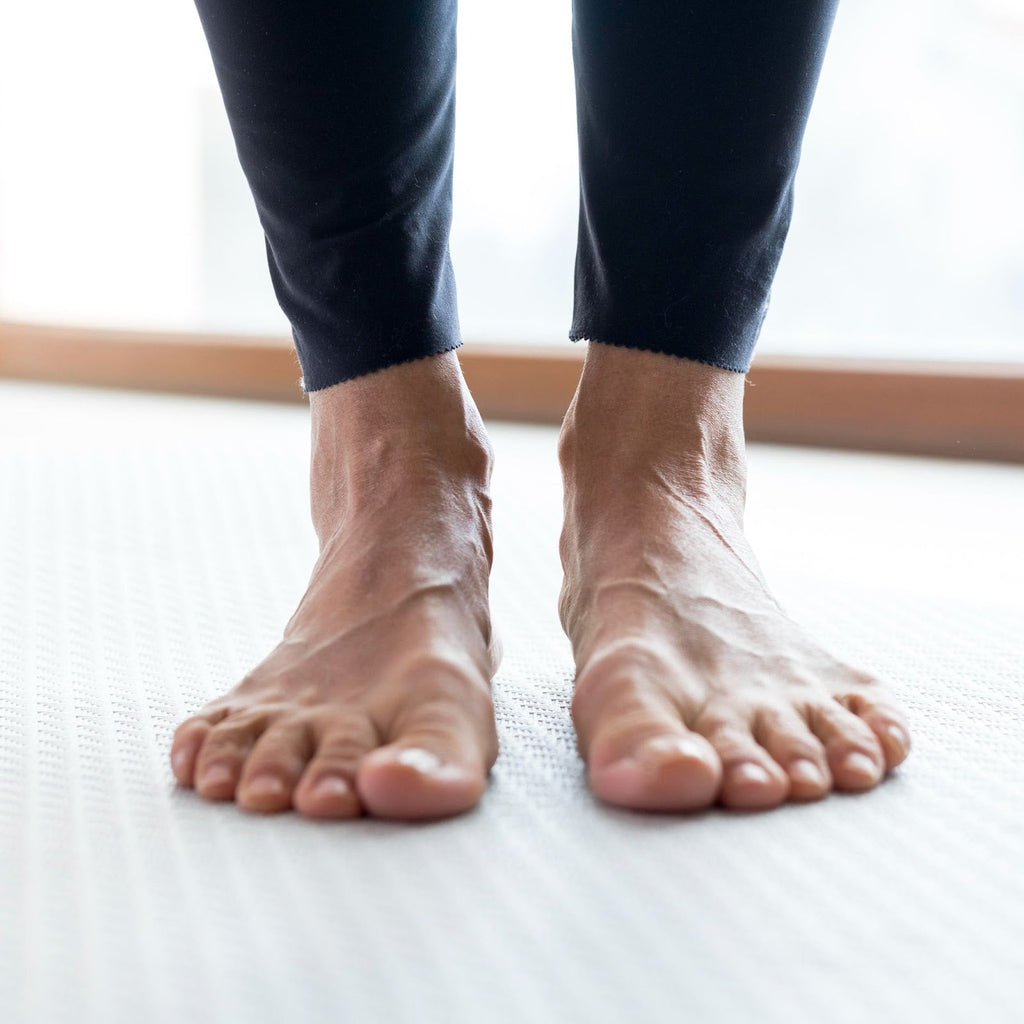Best Insoles for Plantar Fasciitis
Plantar fasciitis is a painful foot condition that can negatively impact well-being. Thankfully, with the right insoles, this condition can be effectively managed, allowing you to go about your daily activities with ease.
In this article, we will help you make this right choice by looking at some of the best insoles for plantar fasciitis. We shall rely on expert recommendations, company reputation, and user feedback to make our choice across five categories - best overall, best for athletes, best custom, best for everyday use, and best budget.
What is Plantar Fasciitis?
Plantar Fasciitis is the inflammation of the plantar fascia, a thick band of tissue located on the bottom of the foot. It connects the heel bones to the toes so it runs along the entire length of the foot and its main function is shock absorption and providing support for the arch.
When this tissue is exposed to repeated stress, it can develop tiny tears which lead to inflammation. When this happens, you will feel a sharp, stabbing type of pain that is most pronounced in the mornings or after you've rested the foot for an extended period of time. The pain is also mostly felt around the arch or heel area.
What Causes Plantar Fasciitis?
There are factors that can result in the inflammation of the plantar fascia. The most common causes include:
· Repetitive Stress and Overuse - Examples include physical activities like jumping, running, and staying up on one's feet for extended periods of time. This is why runners, dancers, and people who have to put their feet under a lot of stress are prone to this condition
· Existing Foot Conditions - People with conditions like flat feet, high arches, or similar ones, a predisposed to this condition because weight is unevenly distributed because of their foot condition which leads to excessive pressure being placed on the plantar fascia
· Tight Tendons and Muscles - This reduces the flexibility of the ankle so the foot has to compensate and by so doing it stretches the fascia more than it should
How Do Insoles Help with Plantar Fasciitis?
Insoles, also known as inserts or orthotics, can be of immense help in the management and treatment of plantar fasciitis. Insoles, whether they are over-the-counter or custom-made, are designed to offer a range of beneficial functions to the feet. It is these functions that help in the treatment and management of plantar fasciitis. These functions include:
· Arch Support - This is one of the fundamental functions that insoles offer. The arch plays a central role in the foot's biomechanics, aiding shock absorption, weight distribution, and balance, among other things. Without proper support, the arch will not be able to perform its function consistently, resulting in misalignment, imbalance, and increased stress on the plantar fascia.
· Pressure Distribution - Even weight distribution is critical so no part of the foot is over-worked. Remember that one of the causes of inflammation in the plantar fascia is increased pressure or stress on it.
· Heel Cushioning - Insoles with deep heel cushioning absorb impact stress, reducing the impact on the heels. Pains associated with plantar fasciitis are often around the heel area so heel cushioning reduces this impact and, by consequence, the pain that comes from the impact.
How to Choose the Right Insoles for You
We’ve established that insoles help with the treatment and management of plantar fasciitis. However, this does not mean that just any insole will get the job done. You need to get the insole that is right for plantar fasciitis and your unique needs.
The following tips will help choose insoles that are right for you.
· Arch Support - Matching the insole's arch height to yours is crucial. Generally, arch heights range from low, medium to high for most over-the-counter insoles. Custom-made insoles will offer an exact match though they will also cost more.
· Heel Cup - Look for insoles with deep heel cups that keep the foot stabilized while also improving shock absorption.
· Level of Support - You need insoles that are firm enough to retain its structured support even when put under pressure.
#1. Stride Soles
Stride Soles Custom Insoles for Plantar Fasciitis are specially designed to fit each individual user’s needs. Designed using 3D imaging and created under expert podiatrist guidance, each insole is custom-made to the exact measurement of the user. This ensures that they enjoy the best arch support, heel stability, weight distribution, comfort, and balance.
Features
· Top-quality materials – Firm TPU shell for optimal heel stability and arch support
· High-rebound foam for optimal comfort and shock absorption
· Sweat-resistant vegan leather top keeps the foot dry enhancing comfort
· Custom-built from 3D scan for an exact fit
· 3D printed for accuracy
Pros
· Custom-made to fit any arch or feet type
· Suitable for all levels of symptom severity
· 180-day money-back guarantee
· HSA/FSA eligible
· Durable – Can last up to 4 to 6 years
Cons
· Costs a lot more than OTC products
· It takes between 2 to 3 weeks to be delivered
Price – $199
#2. Tread Labs Pace Insoles
These podiatrist-recommended insoles offer extra support, a deep heel cup for better balance and stability and 4 arch height supports for a more precise fit. Managing the pain and discomfort associated with plantar fasciitis becomes easier with Tread Labs Pace Insoles.
Features
· Extra firm support
· Four arch height options - low, medium, high, and extra high
· Deep heel cup
· 2-part system - an arch support and a replaceable top
· Million-mile guarantee
Pros
· Suitable for a wide range of arch types
· Durable material
· Lifetime warranty
· Podiatrist recommended
· APMA approved
Cons
· May be too firm for some users
· Costlier than most over-the-counter products
Price – $75
#3. Best for Athletes – Enertor Running Insoles
The Enertor Running insoles are designed for runners and athletes in general. Utilizing the brand's PX1 technology, it improves shock absorption, reducing the risk of injuries. It also enhances performance by improving energy return, increasing comfort, and ensuring that athletes can perform at their best without fatigue.
Features
· Improved shock absorption
· Lightweight material for improved running economy
· Cushioned arch support for better stability
· Enhanced energy return to reduce fatigue
· Boost cushioning for long-lasting comfort
Pros
· Designed specifically for runners
· Enhances performance
· Reduces muscle fatigue
· Improves comfort
Cons
· Will not support all arch sizes
Price - $49
#4 PowerStep Pinnacle Insoles
These full-length insoles from PowerStep are designed with built-in arch support and a dual-layer cushioning that provides maximum support and comfort. By providing adequate arch support as well as heel stability and motion control, these insoles offer relief from the pains associated with plantar fasciitis and other foot conditions.
Features
· Full-length – requires no trimming
· Flexible but flexible neutral arch support
· Dual-layer support for increased comfort
· Odor control top fabric that reduces heat, perspiration
Pros
· Specifically designed for plantar fasciitis
· Podiatrist recommended
· Balances comfort and support
· Relieves pains from plantar fasciitis
Cons
· May not be suitable for high arches
· May not be suitable for high-impact activities
Price – $49.95
#5. Walk-Hero Comfort and Support Plantar Fasciitis Insoles
WALKHERO’s orthotic insole is a budget-friendly option that offers efficient support, alignment, and cushioning. With their ability to reduce strain, improve foot alignment, and relieve pressure, they are a great option for people dealing with plantar fasciitis who also do not want to spend too much on insoles.
Features
· Advanced cushioning technology
· Targeted arch and heel support
· Designed to fit a wide range of shoe styles
· Sizing options available to accommodate different users
Pros
· Affordable
· Multiple sizes available
· Free Exchanges and Returns
· Extended 180-day wear test
· 100% money-back guarantee
Cons
· Lacks customization
· May not be suitable for severe symptoms
Price - $17
How Do I Know if I Have Plantar Fasciitis?
Though plantar fasciitis is one of the most common reasons for pains in the heels of the foot, especially for people above the age of 30 who constantly spend extended periods on their feet, it is important to be able to confirm that it is indeed plantar fasciitis. This is because some other foot conditions exhibit similar symptoms.
To know if you have plantar fasciitis, check for the following:
· Sharp stabbing pain usually felt with the first steps in the morning. The pain may subside after you've taken some steps only to return and worsen when you've been on your feet for an extended period of time.
· Pain concentrated at the bottom of the heel. It may extend to the arch but never goes beyond this point to the toes.
· Pain that appears to become worse after activities rather than during the activity.
· Pain worsening after long periods of standing.
· Pain reducing when you wear supportive shoes or insoles and pain worsening when you walk on hard surfaces barefoot.
Aside from the above, you can also self-test to further ascertain whether or not you are suffering from plantar fasciitis. You can try the Palpation or the Windlass tests.
Palpation Test
Using your thumb, gently press down on the bottom of the heel of your foot. While pressing move the thumb towards the arch area. If you feel some tenderness of sharp pain, this may be further confirmation.
Windlass Test
With your leg crossed over your knee, try to pull your big toe upward. If this attempt results in pain in the heel and also tightens the arch, then you likely have plantar fasciitis.
If all the signs and self-tests given above are not sufficient to provide you with the confirmation you want, then you may just have to visit a doctor for a professional examination.




